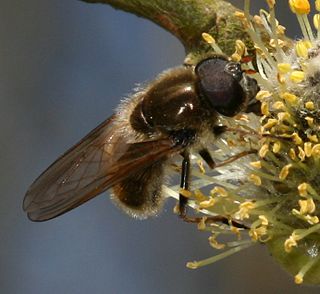
Cheilosia albipila is a European and Palearctic species of hoverfly. Like most Cheilosia it is black, and because of this may often be overlooked as a hoverfly. It is little recorded but probably widespread and common and maybe overlooked because adult flight periods are early in the year, before many hoverfly recorders are active.

Parasyrphus punctulatus is a Palearctic species of hoverfly.
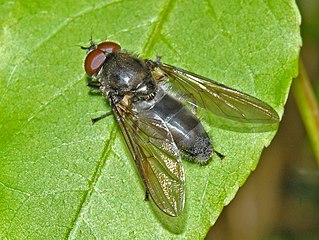
Cheilosia variabilis, common name figwort cheilosia, is a species of hoverfly belonging to the family Syrphidae.
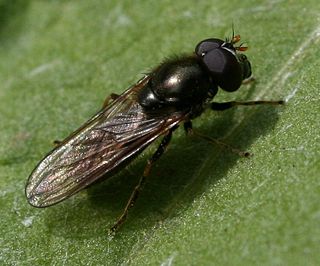
Cheilosia pagana is a Holarctic species of hoverfly. Like most Cheilosia it is black, and because of this may often be overlooked as a hoverfly. One identifying feature is a large red to orange 3rd antennal segment.
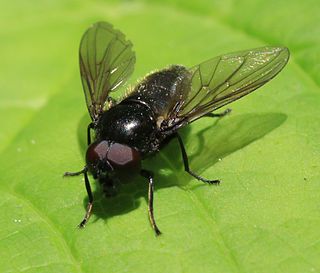
Cheilosia vicina is a hoverfly species found in the Palearctic.

Cheilosia grossa is a widespread European species of hoverfly. Adults can be found in spring on sallow catkins and the larvae tunnel in the stems of various thistle species.

Cheilosia bergenstammi is a widespread European species of hoverfly. Adults can be found in summer visiting ragwort flowers and this plant is also the larval hostplant.

Pipiza noctiluca is a species of Hoverfly, from the family Syrphidae, in the order Diptera.

Parasyrphus vittiger is a species of hoverfly, from the family Syrphidae, in the order Diptera.
Melangyna arctica is a Holarctic species of hoverfly.

Cheilosia nebulosa is a Palearctic species of hoverfly.

Orthonevra geniculata is a species of hoverfly found in the Palearctic.
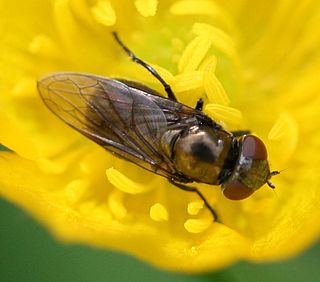
Chrysogaster virescens is a European species of hoverfly.

Cheilosia impressa is a Palearctic species of hoverfly. Like most members of its genus C. impressa is a rather small, dark insect and identification can be problematic.
Chrysotoxum fasciatum is a species of Holarctic hoverfly.

Cheilosia antiqua is a European species of hoverfly.
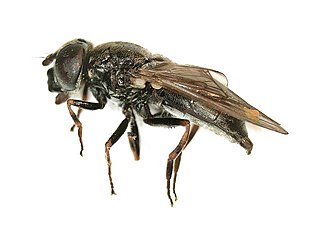
Cheilosia cynocephala is a Palearctic species of hoverfly.
Cheilosia lasiopa is a Palearctic hoverfly. This species was previously misidentified as Cheilosia honesta.

Cheilosia praecox is a Palearctic hoverfly. Speight et al. (1998) indicate that the correct name for this species is C.urbana (Meigen)
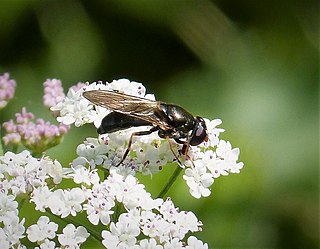
Cheilosia soror is a Palearctic hoverfly.

















